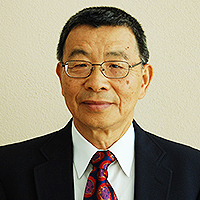The predictive value of the preoperative diagnostic tests in mature cystic teratomas of the ovary
Published on: 19th December, 2018
OCLC Number/Unique Identifier: 7964734669
Aim: The aim of this study was to determine the sensitivity of the tumor markers and diagnostic methods used in the preoperative period for dermoid cysts, the most common benign neoplasm of the ovary.
Material and Methods: 136 patients who were operated for any reason and reported as ovarian dermoid cyst in the Department of Obstetrics and Gynecology, Ankara Atatürk Training and Research Hospital between January 2004 and September 2005 were included in the study. The medical records of the cases were obtained retrospectively from Ankara-Atatürk Training and Research Hospital, HIS, archive files and patient numbers where necessary.
Results: In the preoperative period, 119 patients underwent ultrasonographic examination, 33 underwent Computed Tomography, and 17 underwent Magnetic Resonance Imaging.10 of the cases only underwent CT, while 3 of the cases underwent only MRI 22 of them underwent both USG and CT, USG and MRI were performed on 13 cases and only 1 case underwent all three of the imaging methods. Tumor markers were CEA, CA 125, CA 19-9, CA 15-3 and AFP.
Conclusions: The reviews of ultrasonography and / or computed tomography and / or magnetic resonance imaging (n = 132) revealed that 103 of the cases were put into operation and the sensitivity of the preoperative screening methods were calculated to be 75.5%. The sensitivity of the tumor marker CA 19-9 was calculated to be 31%.
Recurrent Mucoepidermoid Carcinoma of Parotid with Facial Tics - Report of an unusual case
Published on: 16th June, 2017
OCLC Number/Unique Identifier: 7317651487
We report an interesting case of a 21 year old male who presented with recurrent mucoepidermoid carcinoma of parotid with facial nerve involvement as facial tics. Intraoperatively, the tumour was noted to be firm, irregular and adherent to the underlying structures. The patient underwent extended total parotidectomy, division of buccal branch of facial nerve, selective neck dissection with cervical local rotational flap repair and post-operative radiotherapy. This presentation of Mucoepidermoid carcinoma with involvement of facial nerve as facial tics is one of the rare unique reported cases.
A rare presentation of orbital dermoid: A case study
Published on: 10th August, 2021
OCLC Number/Unique Identifier: 9168714793
Introduction: A dermoid cyst is a developmental choristoma lined with epithelium and filled with keratinized material arising from ectodermal rests pinched off at suture lines. These are the most common orbital tumors in childhood. They are categorized into superficial and deep. Superficial orbital dermoid tumors usually occur in the area of the lateral brow adjacent to the frontozygomatic suture. Infrequently a tumor may be encountered in the medial canthal area [1], which is the second most common site of orbital dermoids. We report a case where a swelling presented in the medial canthal area without involving the lacrimal system.
Case report: A 43 year old lady presented with complaint of swelling near the (RE; Right eye) since 2 years duration. She presented with a solitary 1.5 cm x 1 cm ovoid, non-tender, non-pulsatile, firm, non-compressible mobile swelling with smooth surface over the medial canthus of right eye. (MRI; Magnetic Resonance Imaging) brain and orbit showed right periorbital extraconal lesion and the (FNAC; Fine Needle Aspiration Cytology) suggested of Dermoid Cyst. RE canthal dermoid cyst excision was done under Local Anasthesia.
Conclusion: Complete surgical excision in to be treatment of choice for dermoids. Since medial canthal mass can involve the lacrimal system, it becomes necessary to perform preoperative assessments using (CT; Computed Tomography), MRI or dacryocystography while planning the surgical approach. Silicone intubation at the beginning of the surgery is an easy and effective way of identifying canaliculi and of preventing canalicular laceration during dermoid excision if the lacrimal system is found to be involved.




